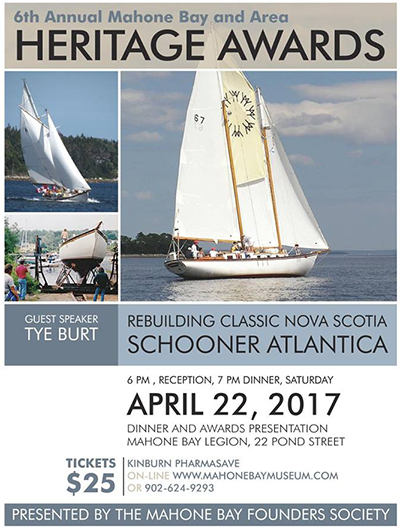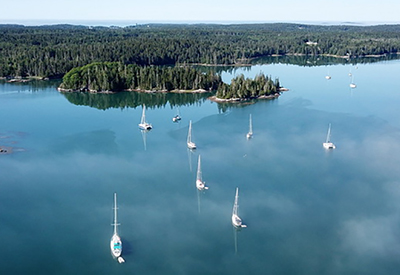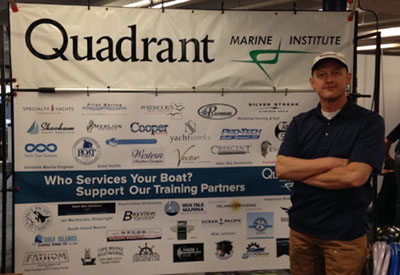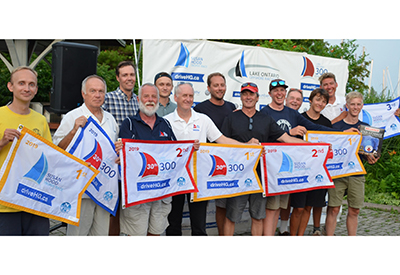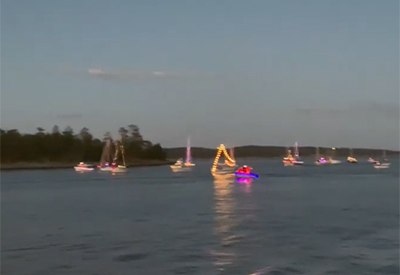In July, champions return to claim 12 Metre World Title
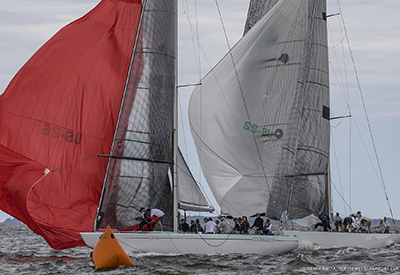
May 23, 2019
When the 12 Metre World Championship takes place in Newport over July 8-13, it will celebrate one of the greatest classes in world sailing history. The 112-year-old International 12 Metre Class encompasses a living history of racing yacht design by the world’s foremost naval architects who pushed their designs to the very limits of innovation. The resulting boats represented the pinnacle of yacht development from 1907-1987 for the highest levels of international sailing competition: the Olympic Games (1908-1920) and the America’s Cup (1958-1987).
It’s going to make quite a statement to the world when 21 of these historic 12 Metres – the largest gathering ever in the U.S. – converge in Newport and it becomes clear that they are still being sailed at such a high level,” said Gary Jobson (Annapolis, Md.), who will serve as tactician aboard Courageous (US-26), an Olin Stephens design that will be helmed by Arthur Santry (Washington, D.C./Newport, R.I.) in the Modern class, for 12 Metres built between 1967 and 1983. (Santry also crewed on the 12 Metre Independence (US-28) in 1977.)
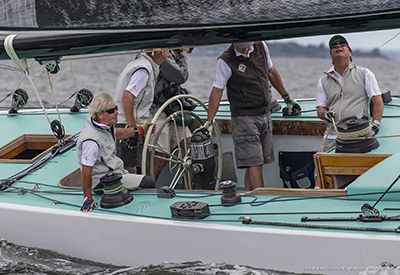 Intrepid_Courageous was the first all-aluminum hulled 12 Metre and the second 12 Metre to successfully defend the America’s Cup twice, in 1974 and 1977. The first 12 Metre, also an Olin Stephens design, was the wooden-hulled Intrepid (US-22), which successfully defended in 1967 and ’70 and will also sail in the Modern Division with skipper Jack Curtin (Toronto, Ontario/New York, N.Y.) at the helm.
Intrepid_Courageous was the first all-aluminum hulled 12 Metre and the second 12 Metre to successfully defend the America’s Cup twice, in 1974 and 1977. The first 12 Metre, also an Olin Stephens design, was the wooden-hulled Intrepid (US-22), which successfully defended in 1967 and ’70 and will also sail in the Modern Division with skipper Jack Curtin (Toronto, Ontario/New York, N.Y.) at the helm.

According to Royal Canadian Yacht Club member Curtin, who salvaged Intrepid in as a “massive labor of love” after it ran aground on Nantucket, his crew hasn’t changed much from when it was first assembled in 1998, after a two-year complete restoration of the yacht. “I’m most proud that we don’t bring in any rock stars,” said Curtin. “It’s staggering the amount of time people are willing to sacrifice for this summer’s racing schedule, but that’s how strongly everyone feels about each other.”
Toronto businessman, RCYC member Jack Curtin, Intrepid
Among Intrepid’s crew members are two father-son combinations. Travis Pierce, son of starboard trimmer Reggie Pierce (Courageous ‘74, Independence ’77), will work the bow, while Ian O’Brien, son of port trimmer Tom O’Brien (Courageous ’74, Independence ‘77), will work the pit. Other America’s Cup veterans crewing are tactician Scott Perry (Independence ’77) and main trimmer Skip Beck (Clipper (US-32) ‘80).
“We’ve started practicing already, so we are serious, and we’ve done whatever we thought we could do to make us more competitive,” said Curtin, noting he has now completed major improvements to Intrepid a total of four times (including this year in preparation for the Worlds). He pointed out other American owners such as Dennis Williams, Charles Robertson, Jack LeFort and Gunther Buerman – owners, respectively, of Victory ’83 (K-22), Freedom (US-30), Challenge XII (KA-10) and New Zealand (KZ-3) – who have invested great amounts of money and effort into either restoring or totally rebuilding the magnificent 12 Metres that will be racing in the Worlds.
“In addition to being as beautiful and significant as ever, the fleet is the fastest it has ever been,” said Curtin. “Every boat that’s racing is in better shape than when it first sailed decades ago.”

